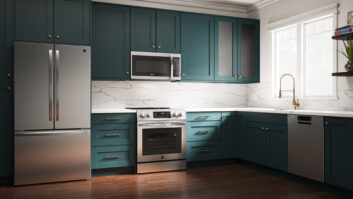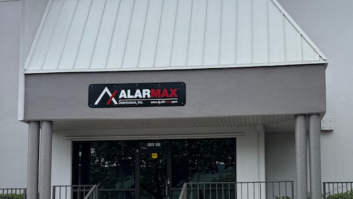ATLANTA
— The most successful
electronic systems contractors
(ESCs) have diversified into light- and
medium-commercial installation, networking
and security.
More are also tackling energy-management
jobs, ranging from automatic
shade controls and light-control systems
to remote monitoring of lights.
But with single-family housing starts
and remodeling way off their peak,
ESCs have also turned to retrofitting
existing homes with multi-room A/V
systems and custom-installed home
theaters.
Often, installers have retrofitted systems by home-running
new wires throughout a house to a central A/V rack.
At the CEDIA Expo, however, multiple suppliers plan to
arm ESCs with no-new-wires technologies that send audio
and video throughout a house over existing powerlines,
via wireless RF, or via unused CAT-5 and coaxial cables
dropped behind walls during new-home construction to
future-proof a home.
Proponents of the no-new-wires, approach, however,
admit ESCs have been slow to embrace
the concept to distribute audio and video
content, though they have turned to
powerline technology and wireless-RF to
distribute lighting-control signals around
the house. “For installers, retrofit typically
means punching holes in walls, pulling
wires and patching holes,” said Jeff Kussard,
strategic development director of
distributor Capitol Sales. “It takes a very
strong-willed consumer to subject themselves
to that type of project, so the sales
opportunity is very small.” With a no-newwires
approach, “you can complete the
same project in hours or days versus
weeks or months.”
“Manufacturers see this as a huge opportunity, but the
dealer community hasn’t yet, maybe because no-new-wires
technology wasn’t reliable in years past or because there is
a fear to embracing this change,” Kussard admitted.
“We made a living off 1 percent of the market for the
past 20 years,” Kussard said, citing Census Bureau
and market statistics showing that during the housing
boom’s peak years, new homes accounted for only as much as 5 percent of total households
and that home technology penetrated only 20
percent of those new homes. “If you want the
other 95 percent of the market, no-new-wires
let’s you address that.”
Here’s what some companies and associations
plan to show at the Expo to leverage the
no-new-wires approach:
AMX:
For the first time at a CEDIA Expo,
the company will show its $11,900 HDMI
UTPro-0808 matrix switcher, which uses
Valens Semiconductor’s HDBaseT technology
to send uncompressed 1080p video
with HDCP copy-control protection, audio,
100BaseT Ethernet, control signals, and
power over CAT-5 cable from up to eight
HDMI display sources to eight displays up
to 100 meters away without the need for
repeaters. The switcher comes with eight
receivers.
Artison:
A 2.4GHz wireless multizone
audio system uses combination LED-light/
speakers that screw into existing recessedlight
fixtures in the ceiling.
The system can also be used in a single
zone to enhance TV sound.
Elan:
A Euro series on-wall speaker and an in-ceiling speaker are designed to be at home as much in
single-family homes as multiple dwelling units in retrofit and
new-construction applications.
Gefen:
The company will demonstrate its ToolBox Extender
for HDMI 3DTV, a package of wall-mount senders
and receivers that deliver 1080p 3DTV signals over a single
CAT-5 cable up to 100 meters. The systems simultaneously
distribute multichannel Dolby True HD and DTS HD
Master Audio over CAT-5.
MoCA:
The Multimedia over Coax Alliance (MoCA),
which joined CEDIA, will exhibit at a CEDIA Expo for the
first time to extend what it calls its “overwhelming success
in the pay TV operator channel” to the installer community.
At press time, the association said it might show some
new products or prototypes at the show, but one alliance
member, Actiontec, will show its current Ethernet-overcoax
network adapter.
NuVo:
The company is adding a second amplifier
option to its Renovia powerline-based multi-room audio
system. To complement its existing in-wall D2120
amplifier, which gets audio signals over powerlines, the
company is launching a freestanding tabletop D460,
which comes with adapter to plug into any wall outlet.
It’s intended for use with in-room speakers or, if the attic
has power outlets, with in-ceiling and in-wall speakers, a
spokesperson said.
The new amp ships the week of the CEDIA Expo. NuVo’s
Renovia system is controlled from an in-wall control pad,
a wireless handheld controller or with the NuVo App on
an iPod Touch, iPhone or iPad. The Apple app requires a
Music Port (MPS4) or new Music Port Elite (MPS4-E) to
be connected to a Renovia Hub. The Music Port connects
to a home’s Ethernet network.
Plaster Networks:
Targeting custom channels for its
powerline adapters, which send video, IPTV and Internet
access over existing power lines, is part of the company’s
strategy. The powerline adapters are called intelligent because
they include a processor for network management,
configuration, diagnostics, troubleshooting and automatic
firmware updates, the company said. The processor enables
remote management and configuration through a
Plaster Networks service. At the show, the company will
offer a starter kit only to custom installers. It consists of a
PLN3 sender and one AV200 receiver at $99, down from
the usual $129. Additional AV200 adapters can be purchased
at $64.95 each.
Proficient:
The 2.4GHz AirFlex wireless audio system is
intended for use with surround speakers, powered subwoofers,
and second- and third-zone outputs of A/V receivers.
A transmitter connects to an audio source. Receivers
feature a built-in 2×50-watt amplifier, a full-range line-level
output to drive a powered subwoofer, and a 3.5mm localsource
input. One transmitter drives up to two receivers at
a range of up to 70 feet.
One transmitter/receiver pair retails for a suggested
$400. Additional receivers are $250.
Four user-selectable channels help avoid interference
with other wireless devices. An included remote with the
AirFlex receiver controls volume, mute and source selection,
enabling the receiver to be used as a stand-alone amplifier.
The system is targeted to retrofit installations as well as
expanding the customer base to renters who can take their
system with them when they move, the SpeakerCraft division
said.
Yale:
The door-hardware company will show its first
wireless locking system. It uses either a capacitive touchscreen
and pushbutton keypad to send wireless control
signals via Z-Wave, or Zigbee technology to deadbolts and
lever locks throughout the house.
The system is also compatible with the 2.0 user interface
recently launched by Control4 for its home-control
systems, which also use Zigbee. Via a Control4 system,
consumers create personalized events or scenes triggered
by a button press at home or remotely via the Internet.
Z-Wave:
Two companies will show new products incorporating
Z-Wave wireless-control technology. Remotec will
show the Z-Extender 300 Z-wave-to-IR extender, said to be
100 percent interoperable with any Z-wave controller and
gateway that supports the simple-A/V-command set.
FortrezZ will unveil a water- and freeze-detection sensor
in an outdoor-rated enclosure that operates on three AA
batteries or a DC power supply. It measures water temperatures
and detects water and freeze events. FortrezZ
will also show a siren/strobe alarm, which operates with
any Z-Wave security component to sound a 117dB siren
and light when triggered.













